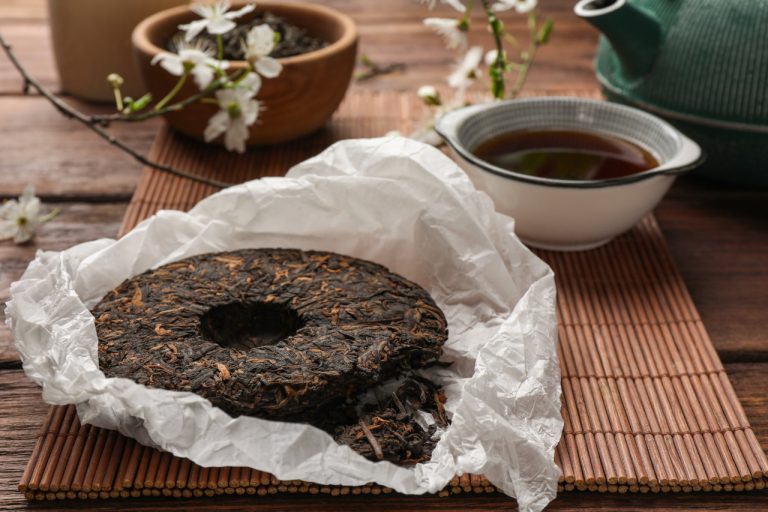Pu’er tea is distinct from other teas due to its unique fermentation and aging process.
There are two main types of pu’er tea: sheng (raw) and shou (ripe).
Sheng pu’er undergoes a natural aging process over several years, while shou pu’er is fermented more quickly through a process introduced in the 1970s to mimic the aging process.
The result is a tea with complex flavors, often described as earthy, woody, and sometimes even slightly sweet.
However, like every other type of true tea from the Camellia sinensis plant, pu’er tea does contain caffeine.
The Caffeine Content
The caffeine content of pu’er tea vary significantly depending on several factors, such as the specific type of pu’er, its origin, its growing conditions, its age, the leaves used, and how the tea is prepared.
Generally speaking, sheng pu’er is thought to have slightly higher caffeine levels than shou pu’er. This is presumably due to the natural aging process of sheng pu’er preserving more of the caffeine content found in the tea leaves. In contrast, the fermentation process used in shou pu’er is thought to slightly diminish the caffeine content.
However, even within these categories, caffeine levels can vary drastically.

